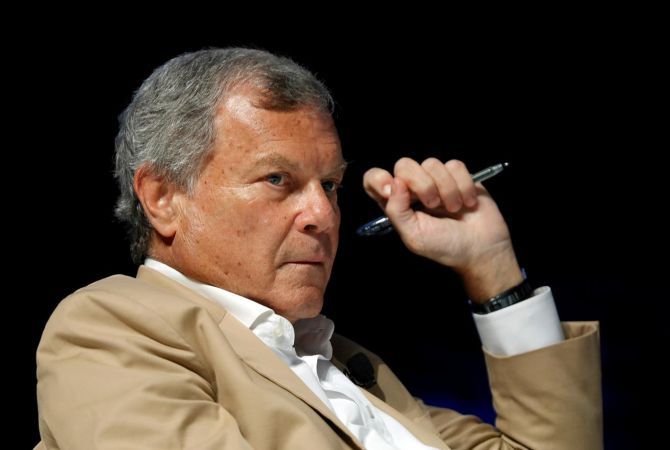Whatever happens to WPP, the marketing communications business will no longer be the same again, says Sreekant Khandekar.

Rarely has that awful cliche, “end of an era”, been more appropriately used than in marking Sir Martin Sorrell’s resignation from the leadership of WPP, the world’s largest marketing communications group, after 33 years.
The facts surrounding his exit are hazy.
WPP had announced that it was investigating alleged misconduct by Sorrell, something he denied.
The company soon said the investigation was over and that “it did not involve amounts that were material to the company”.
Why Sorrell went ahead and resigned anyway is baffling.
It was an unhappy exit for a man who, some years ago, had been compared by a writer to a great white shark, which could never stop swimming for it would die.
Sorrell had to keep moving, always building, always breaking, always acquiring.
When asked what success looked like, Sorrell had replied, “Neverending”.
It would have seemed flippant except that it came from a man who had built an empire of 405 companies with about 3,000 offices in 112 countries employing over 200,000 people. Topline: 15.2 billion GBP in 2017.
An alumnus of Harvard Business School, Sorrell learnt his acquisition skills as group finance director of Saatchi & Saatchi, a British advertising agency that made a series of acquisitions between 1975 and 88 before imploding.
Desiring to go independent, Sorrell wanted a publicly listed entity in the UK he could use as a holding company before beginning his own acquisition spree.
He came upon Wire and Plastic Products (WPP) in 1985.
Sorrell began with small acquisitions in the UK and the US.
In 1987, he stunned the advertising world when he acquired J Walter Thompson (JWT) one of the oldest and grandest names in the business, for about half a billion dollars.
He used a mix of debt and equity to swallow a company 13 times WPP’s size.
The advertising community was still recovering from the shock of having a ‘bean counter’ as owner of JWT when Sorrell made a bid for another top agency, Ogilvy & Mather.
When the legendary David Ogilvy, upset at the prospect of being taken over by WPP, described Sorrell as “that odious little jerk”, it sealed his reputation as advertising’s outsider. (Sorrell did charm Ogilvy and the two later became a mutual admiration society.)
WPP went on to acquire Grey and Young & Rubicam.
Sorrell realised that marketers didn’t want just advertising but a range of services besides.
Some of his big acquisitions: in PR it was Burson-Marsteller; in research, agencies under the Kantar umbrella; in direct and digital, Wunderman.
He offered ‘integrated communications’ before the term became popular.
The WPP empire was made of acquisitions. His big organic ‘build’ was GroupM, a media agency behemoth consisting of Mindshare, MediaCom, Wavemaker and Essence, among others.
Sceptics of mergers were amazed that Sorrell acquired not only hundreds of companies across geographies but did so across a range of businesses as well. WPP could make a classic case study in how to manage mergers.
The last couple of years had been hard and 2017 “was not a pretty year”, according to Sorrell who was also one of the UK’s highest paid executives.
WPP’s stock has fallen by about a third over the past 12 months. What’s wrong?
One, much of the ad growth in the West is digital and the bulk of that increase goes into the pockets of Google and Facebook. Advertisers deal directly with them and this cuts out agency fees.
Two, marketers of fast moving consumer goods, the traditional bedrock of the ad business, are getting hit in mature markets by online retailers. They, in turn, are squeezing their agencies.
P&G is working towards cutting more than $1 billion annually in the cost of making ads.
Lastly, as digital advertising has grown, tech consultancies like Accenture have been pitching to marketers that they have far better tech capabilities than do agencies.
Marketers grumble that the traditional agency structure is too complicated -- and expensive.
So, Sorrell had been moving towards cutting down on agency brands -- the recent merger of MEC and Maxus into a new media agency, Wavemaker, is an example.
He has also merged Burson-Marsteller with another firm, Cohn & Wolfe.
He’d begun to believe that clients were indifferent to agency brands -- they only wanted to work with the best people.
Additionally, Sorrell wanted to ensure that along with basic capabilities like finance and HR, all his specialised agencies (verticals) needed the skills to handle digital marketing, data analytics, shopper experience and ecommerce -- ‘horizontalities’, he called these.
Days before his resignation, he said that the most important thing was to simplify what the network was doing.
He wanted WPP to look like one firm rather than a collection of agencies. He was speeding that process up -- but now he’s gone.
What happens to a company that has high debt, no growth and just lost a highly visible leader?
Scenario 1: The new CEO will slash overheads, squeeze more synergies from its many units and prove that the idea of a WPP-style network still applies.
Scenario 2: The stock shock compels the sale of some units so as to reduce debt. Speculation focuses on either one or more of the research and/or PR businesses being hived off.
Whatever happens to WPP, the marketing communications business will no longer be the same again.
Photograph: Eric Gaillard/Reuters.
Sreekant Khandekar is co-founder & director, afaqs!











